Artist Interview: Steve Pardue
The King of the Nature Journal in Northumberland
I can’t believe we’ve come to the end of our time with accordion books (for now). Before we delve into a new book structure next month, I wanted to share the work of another Hexham based artist, Steve Pardue, who has been making nature journals using the accordion book structure for many years. His work is truly inspirational and I hope it inspires you too.
I’ve had Steve in mind for an interview for a few weeks. I was lucky enough to join one of his workshops with my daughter last summer. So when I contacted him a few weeks ago, asking if he would take part in an interview, one thing lead to another and now we’re actually collaborating on a project based in Hexham, teaching how to make your own Chap books. I will keep you posted on dates. It’s one of those wonderful things that wouldn’t have happened, had I not started this glorious bookbinding club on Substack! Long live new collabs!
Okay, let’s get into the interview:
Hi Steve, Can you tell us about your practice?
I have been a practicing designer and artist since leaving college in 1980. In the early days I worked in advertising and print production. Later I started my own business and continued providing print and design for clients. After a year off traveling the world by bicycle in 1989 I came back with a renewed interest in nature and shifted the focus of my work to concentrate on nature based work.
Your nature journals are really intriguing, can you tell us how you started making them?
I started keeping a nature journal in 2017 - I was spending so much time outdoors with my collie - walking mainly but also a little bit of sheep herding with her - and, being outdoors and vigilant with her taught me to really see things. I then began noting things in a little Moleskine sketch book I had in my possession for a long time but hadn’t found a way of using it.
I sat in the woods watching Jess watching a squirrel and sitting among some little plants - turns out it was Dogs Mercury - so called as it looks similar to, but ‘lesser than’ plants in the mercury family. Looking more closely, you see is not just the visual but the stories behind the seeing.
From this little cameo began a continuous journey of capturing stories and recording observations every time I walked with Jess. Year after year I was able to capture the everyday things I saw - slugs and beetles, flowers leaves, birds - and recording the first date I heard a chiffchaff or saw a swift allowed me to compare their arrivals to the previous years.
As my hobby business progressed I have been winding down my commercial public art business in order to focus more on my nature based art and once I made this decision in 2024 suddenly I am inundated with requests to run nature journal workshops. I am now doing this full time and Differentia Ltd will deliver its final artworks this year with a piece called "Lace and Grace" in Olney celebrating the hymn Amazing Grace and "Figures of Tyne" celebrating the joyous history of Newcastle.
I really enjoyed coming to your nature journal workshops, are you running any more this year?
Yes! I have been on tour with the Highlights Rural Arts programme, National Trust on the Isle of Wight, Quirky Workshops, an American travel company, local libraries, art clubs and community associations as well as the Baltic Gallery for Contemporary Art in Gateshead.
When we have spoken about your books, you refer to them as Chap books, can you tell us more about that?
I have developed a process based on a 500 year tradition of capturing stories - Chapbooks. So what I provide is small concertina chapbooks to capture doodles - doodles are easy after all! I then take people of a short walk - usually a garden or small green space where there is always something to find - dandelions, slugs, daisies, bees etc. These are the things you see everywhere and at most times of the year. I show people how easy it is to draw these things by using a pen - pencils are banned - and drawing very slowly and mindfully. Then suddenly everyone goes quiet and all you can hear is the gentle drawing of pen on paper. Suddenly the stress of “how to draw” is gone.
The most rewarding outcome is that at the end of the class everyone can draw - and each little creation is charming - and they are all so different - everyone loves everyone else’s as well as their own. Many come into the class saying “I am not an artist” and then leave knowing they are an artist.
I also offer the best tools that most people have in their pocket or bag - the smart phone - after all Da Vinci would certainly have one in his pocket - or whatever people had for pockets in those days! So the phone can provide photos and reference allowing people not to get stressed about going out in the wild chasing down hares that run or deer that flee.
The recent workshops on the Isle of Wight also brought a number of established artists who can draw but didn’t know how to see nature. This is where we can learn from the past and the book reference I provide go as far back as the 1700’s with Gilbert White and later Ralph Waldo Emerson and latterly Enid Blyton - yes Enid Blyton edited and wrote the introductions to my favourite bird book in the Wayside Series. I think this allows people to look at nature with different eyes and get an understanding that they can look at nature in their own way too - you don’t need to be an expert - you just need to love nature. Everyone loves a slug don’t they - well if not - listen to the - slugs have three types of mucus - one to repel predators - one to help them with locomotion and the last one is their moisturiser - also used in the fashion industry - and the latin for blag slug - Arion Ater translates into noble - and so this brings us to the only strict rule I have in my workshops is when you draw a slug you have to include a little red heart next to it.
What advice would you give to someone starting out in making a nature journal?
As far as starting a nature journal goes it can be really easy - a simple notebook and some observations is a good start - but drawing them in a little concertina book that you make is a lovely way to have a personal connection to your journal as well as to nature. It is less important to name everything you see than just seeing and making note of things you see as well as how you felt when you saw them. After all a nature journal can be a personal conversation with yourself and I don’t know about you but I am always talking to myself!
If you’re local to Hexham, look out for workshops from myself and Steve coming up. If you’re interested just leave a comment and I’ll share the dates when they land.
To join one of Steve’s workshops, take a look at his website.


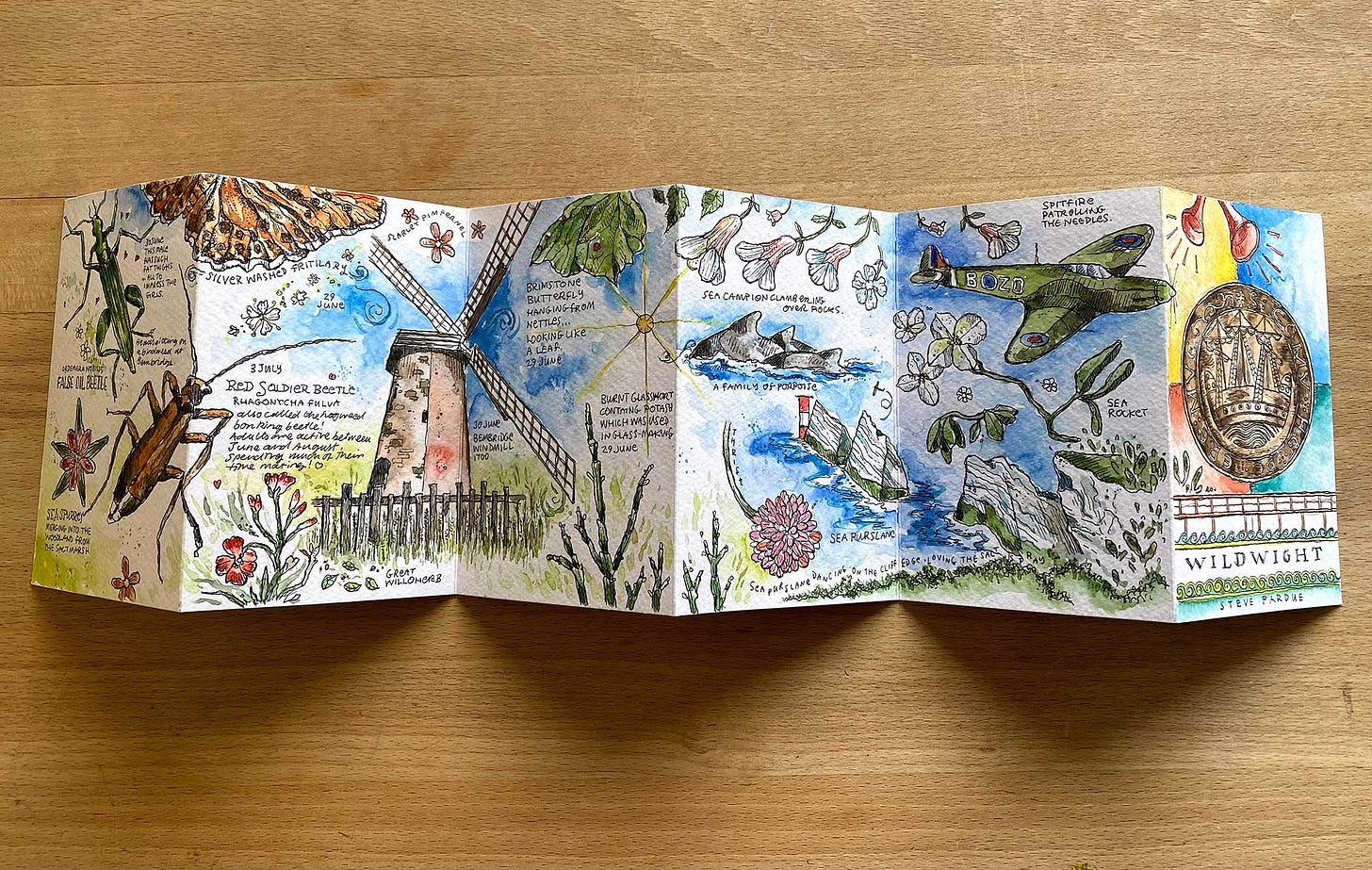
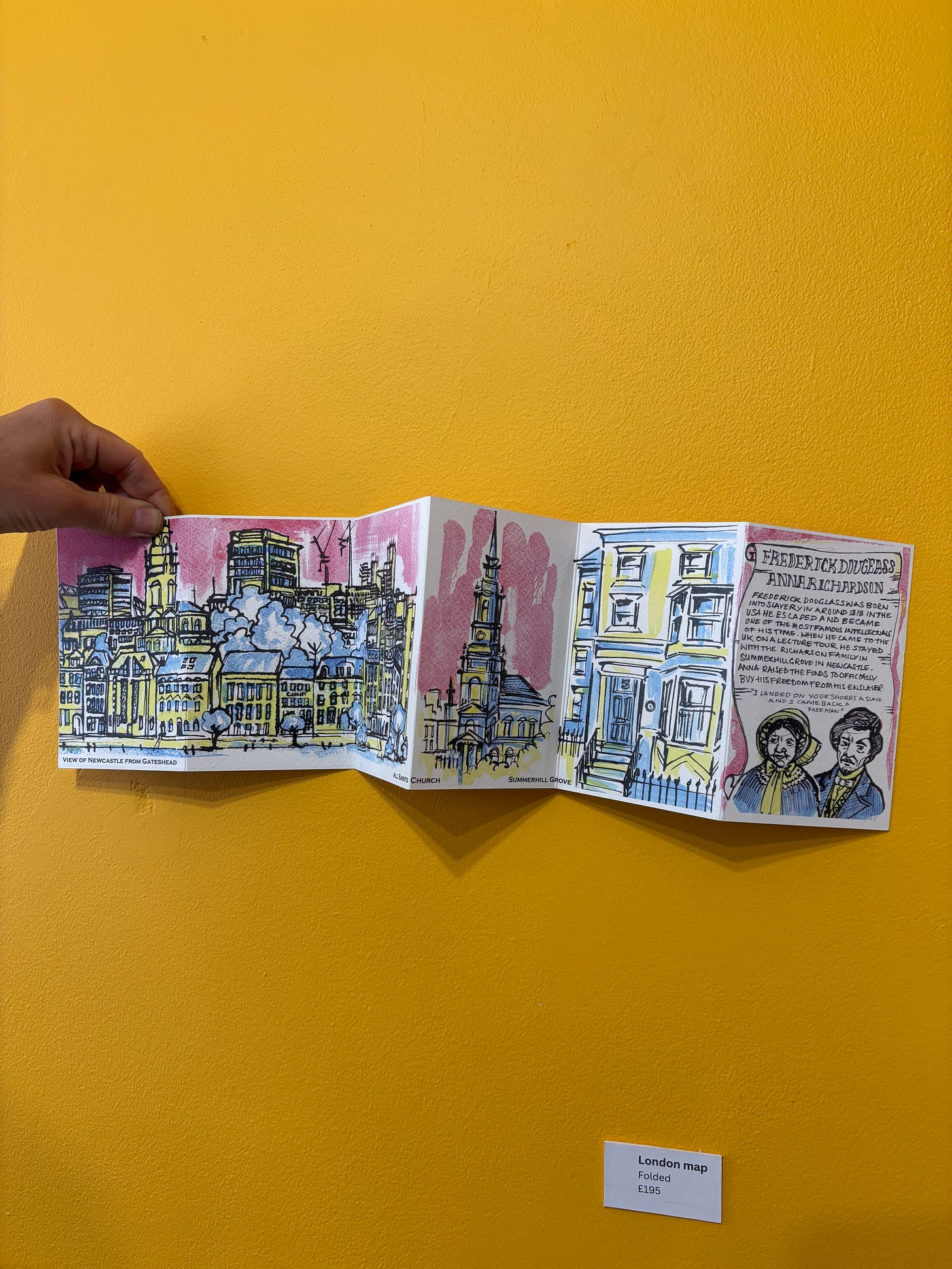
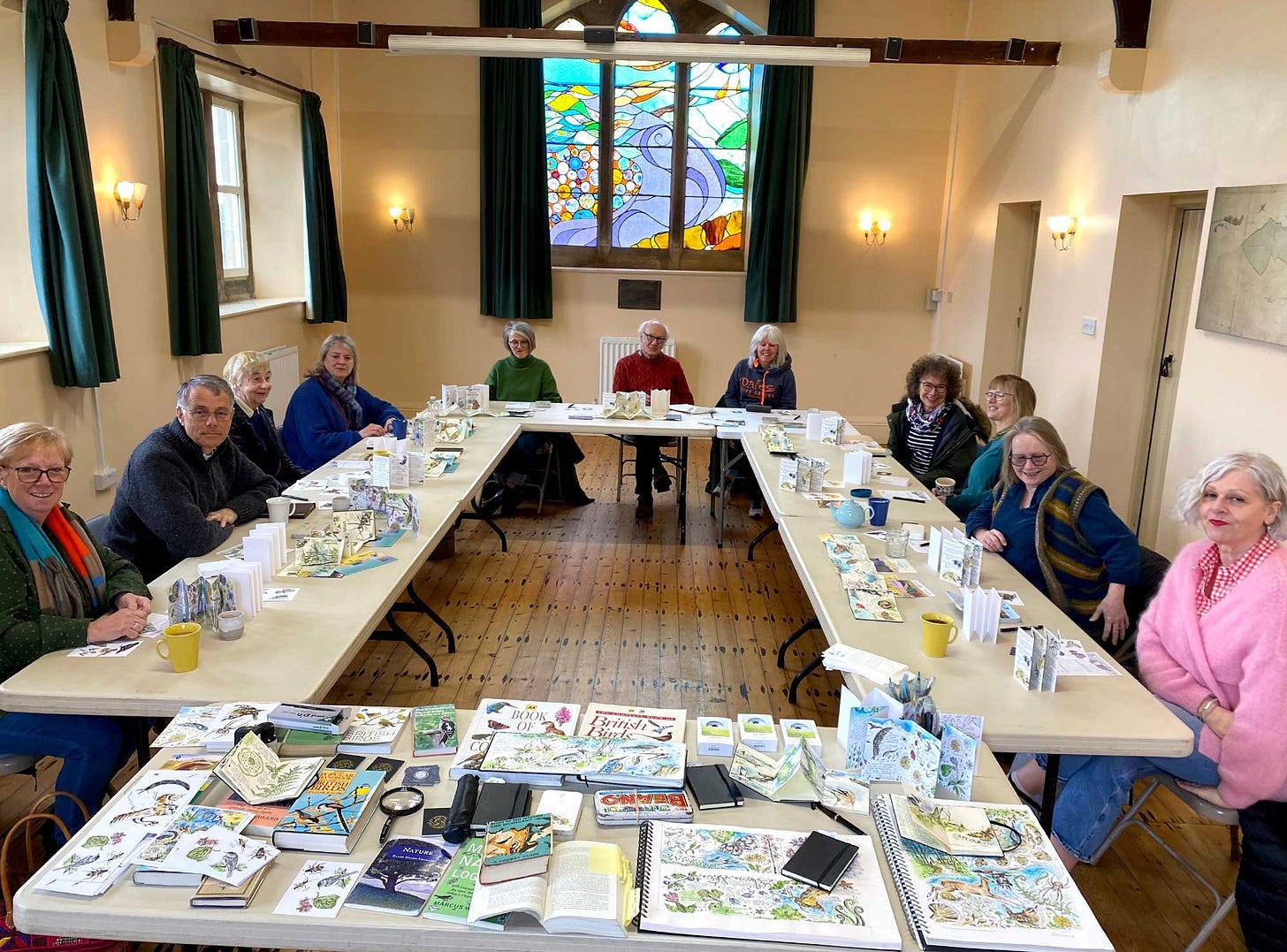
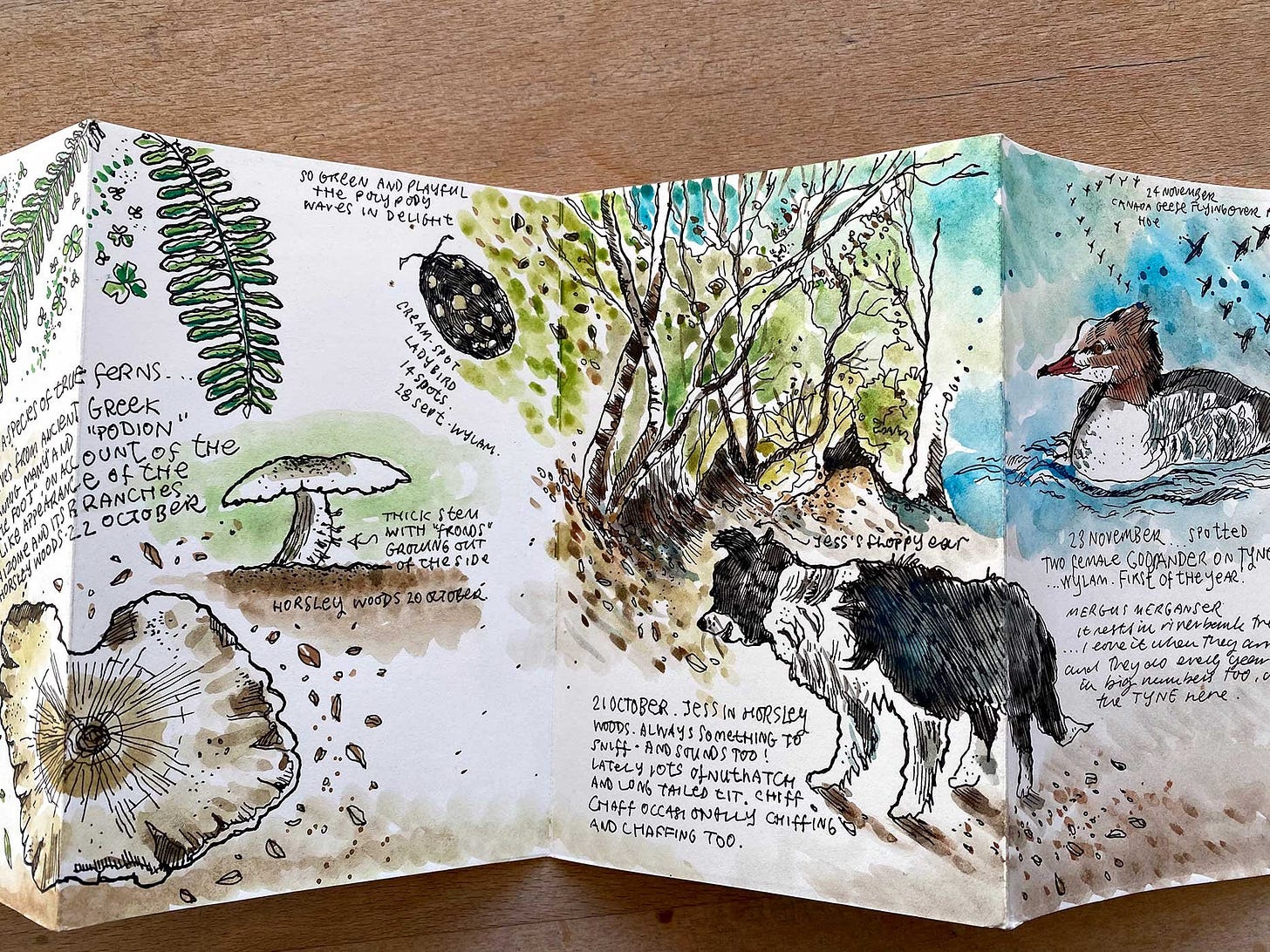
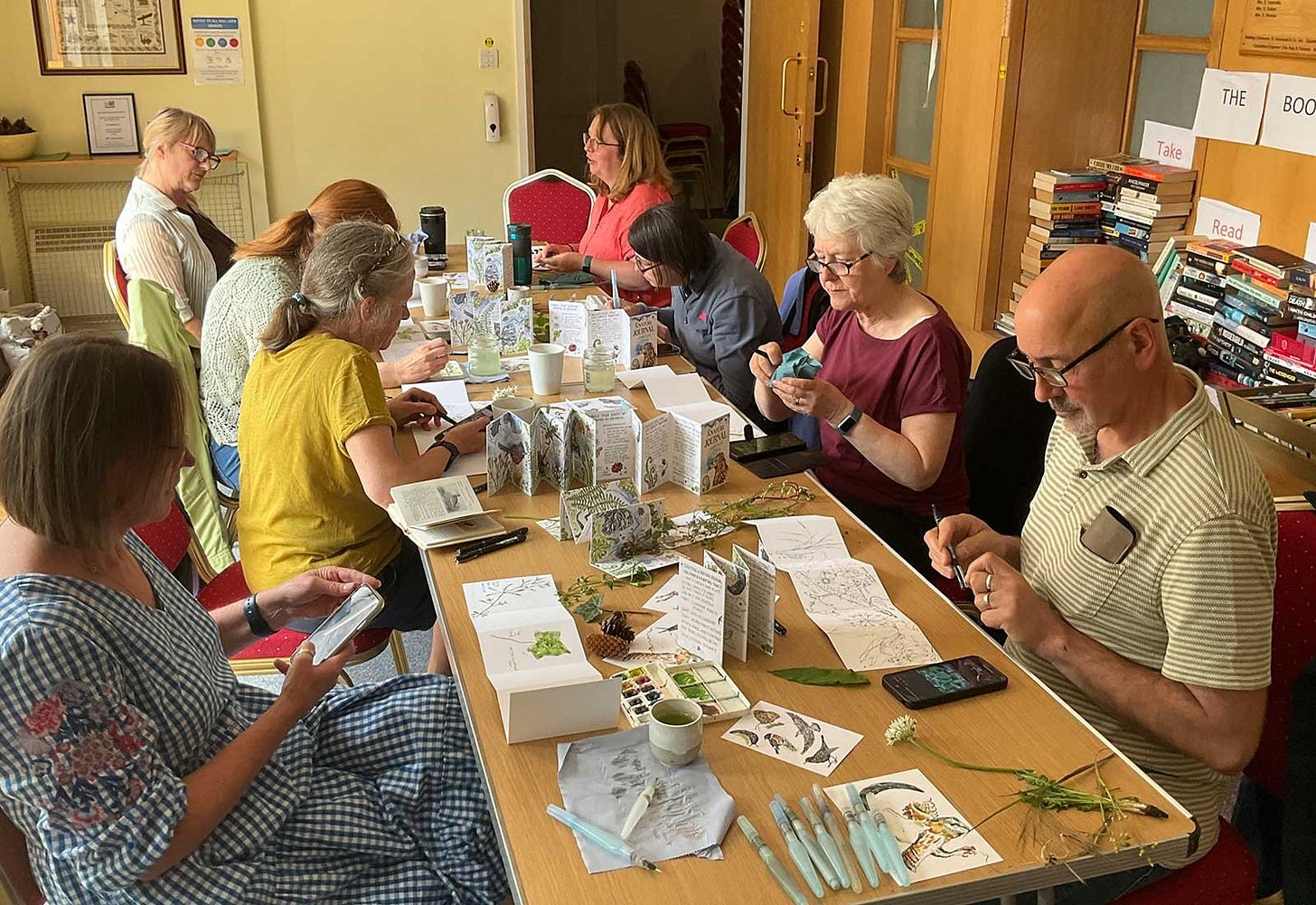
If only I lived closer! Sounds like a great collaboration
This week is international nature journalling week, there is lots of inspiration to fill books here
https://www.naturejournalingweek.com/
Loved attending Steve's workshop on the Highlights Tour in Allendale. So much so, I'm now taking inspiration from his methods to create a travel journal as we meander through France. Will be home to Hexham in a couple of weeks and would love to have my name on the list with you and Steve, Yvette. A great collaboration ❤️